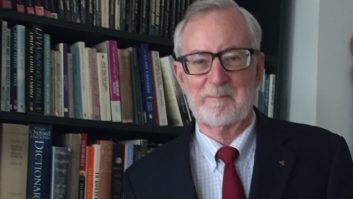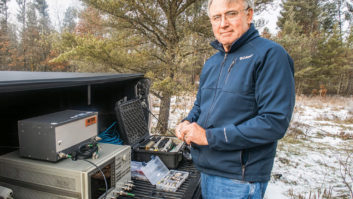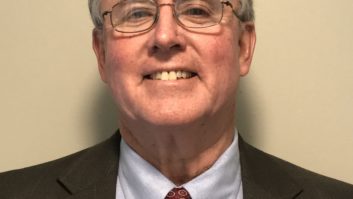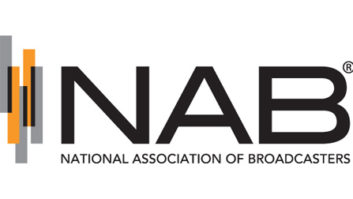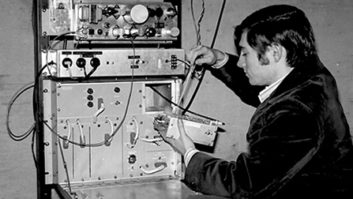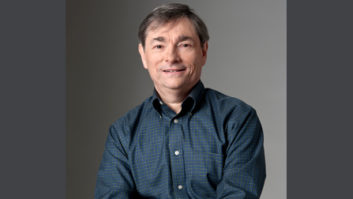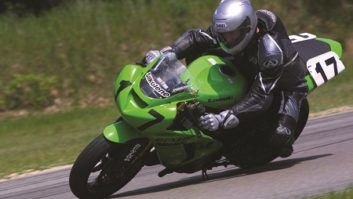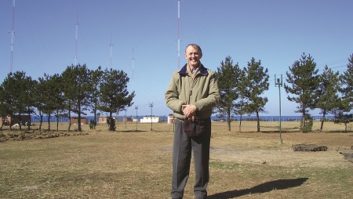Kilohertz Gurus Singled Out By NAB
It seems fitting that Ron Rackley and Ben Dawson both receive this year’s NAB Engineering Achievement Award. The two veteran consulting engineers have partnered on many international broadcast projects throughout their careers and share an admiration for each other’s work. Moreover, both love AM broadcast system design and optimization.
“Ron and Ben have worked passionately in their craft and are known throughout the broadcast industry as true experts in the field of broadcast antenna systems – especially directional AM systems,” said John Marino, NAB vice president of Science and Technology.
The NAB will honor the two during the NAB2006 convention in Las Vegas. The Radio Engineering Award is given to industry leaders for significant contributions that have advanced broadcast engineering.
“Hundreds of broadcast engineers have learned how to troubleshoot and maintain their antenna systems as a result of NAB’s directional AM seminars led by Ron and Ben. Their laid-back teaching style has been very well received over the years,” Marino said.
Ironically, Rackley is a self-professed introvert uncomfortable speaking in front of crowds.
“However, I’ll do it if I can help other engineers understand what AM is all about. Professionals are supposed to share information and to share knowledge,” he said.
A Clemson Tiger
Rackley, 53, is partner in the engineering firm du Treil, Lundin & Rackley, Inc., based in Sarasota, Fla. The Clemson University electrical engineering graduate is a former radio chief engineer and antenna designer for Kintronic Labs Inc. He co-founded the predecessor to his current firm, du Treil-Rackley Consulting Engineers, with Bob du Treil in 1983.
“I can’t recall a time when I wasn’t interested in radio,” Rackley said, who grew up in Greenville, N.C., and worked as a duty operator for several local AM stations while still in high school. “I had plenty of time to read various engineering reports and study contour maps while on duty. Radio always seemed like magic to me. It seemed less like magic after I took mathematics in college.”
Rackley said he found AM radio particularly fascinating, especially directional AM.
“I always had an interest in how it worked. I just thought it would be a good field to go into. I also realized with the development of computers that we would be able to limit the experimentation part of it,” Rackley said.
Rackley first met Dawson while working for Kintronic Labs more than 30 years ago. Rackley built a phasor for a radio station that Dawson worked for.
“Ben is one of my closest friends and someone I trust implicitly. We have a wonderful relationship,” Rackley said.
The pair formed a partnership in 1987, the dTR/H&D Joint Venture, to pursue overseas high-power medium wave antenna system and allocation engineering projects for the U.S. government. Most projects are in excess of 50 kW, Rackley said.
“At the time the overseas work would have overtaxed any one of our firms, so we formed our partnership. We soon realized there was quite the demand for high-power AM stations from foreign broadcasters, too,” Rackley said. “We are currently working on a project together in Sao Paulo, Brazil.”
Rackley is familiar with the HD Radio rollout in this country, having served as a consultant to USA Digital Radio during the early stages of IBOC testing in the United States. He has assisted numerous client stations through the evaluation process of converting their facilities to digital.
“AM broadcasters need to be concerned about the suitability of their technical facilities. They need to realize they may have performance in areas where they didn’t before. The signal contour coverage areas will not be as large with digital AM.
“Adjacent channel noise could be an issue and coverage areas will generally be smaller,” Rackley said.
Rackley isn’t sure why the FCC hasn’t yet authorized nighttime digital service on the AM band, although he expects it to happen sometime this year.
“Could be they are having second thoughts about the service at night, or maybe they have just been busy with other things,” Rackley said. “If they don’t authorize nighttime service, in essence you have created just a daytime service.”
Rackley, his wife Dorothy and their four children live in Bradenton, Fla.
Narrowband characteristics
Meanwhile, Dawson, managing partner of Seattle-based Hatfield & Dawson Consulting Engineers, believes the majority of AM antenna systems probably will be able to produce acceptable IBOC performance, despite the narrowband characteristics of AM.
“HD Radio is an interesting dilemma for AM broadcasters because so many antenna systems are inherently narrowband. There is inherent narrow-banding from the antenna pattern itself and the layout of the towers, along with other narrowband situations that result from the feed system design,” Dawson said.
As for eventual nighttime authorization for AM digital broadcasts, Dawson said of potential interference concerns, “It’s necessary to understand that from an administrative standpoint, frequency allocation matters are not fundamentally engineering problems, but rather political problems. The job of regulators is to balance interference concerns with providing adequate service to certain communities.”
Dawson said AM broadcasters have faced many challenges throughout his 30 years as a consulting engineer, digital just the latest of them.
“I came in at a time just after the AM freeze was lifted and at a time when many broadcasters had been neglecting their facilities. I have always been interested in AM antenna performance and design and followed it very closely,” Dawson said.
Dawson, 65, even taught himself calculus in high school to better understand antennas and can recall the first transmitter he fixed.
“When I was 15, I began working an air shift during the summers for a radio station in Salem, Ore., but when the transmitter broke – an old RCA 250L – I was the only one who could fix it. Then my parents moved to Portland, Ore., and I started work for KUIK(AM), which was half-owned by Harold Singleton, who was a consulting engineer. Once Harold realized I could fix things I became his gofer,” Dawson said.
After stops as chief for several West Coast radio stations, Dawson formed Hatfield & Dawson in 1973 along with Jim Hatfield Jr., and Maury Hatfield. The practice today is diverse, Dawson said, ranging from about 50 percent broadcast-oriented work to mobile and government clients.
“This is the perfect job for me. It’s one of the few jobs I know that allows a person to do serious intellectual work, work with your hands, write and solve complicated practical problems,” Dawson said.
Consolidation within the broadcast industry has significantly impacted the role of consulting broadcast engineers, Dawson said.
“As a result of ownership consolidation, many groups now employ engineering departments more capable of doing highly technical projects. So I think more work is being done in-house. However, consolidation has resulted in broadcasters having the money to upgrade their AM facilities after years of neglect. That has resulted in more work for us.”
Dawson said he is honored to receive NAB’s top broadcast engineering award with Rackley. “We have had so much fun designing AM projects together and trading ideas for over 30 years. It’s nice to be considered in the same stratosphere with someone so talented,” he said.
Dawson lives with his wife, Mary Lou, in Seattle. The couple has four grown children.
Past winners of the NAB Engineering Achievement Award include Geoff Mendenhall of Harris Broadcast, Glynn Walden, formerly with Infinity and now CBS Radio and 2005 winner Milford Smith of Greater Media.
Honor Roll
Past winners of the NAB Engineering Achievement Award. Beginning in 1991, radio and TV winners were named; radio winners are listed.
1959 John T. Wilner.
1960 T.A.M. Craven
1961 Raymond F. Guy
1962 Ralph N. Harmon
1963 Dr. George R. Town
1964 John H. DeWitt Jr
1965 Edward W. Allen Jr.
1966 Carl J. Meyers
1967 Robert M. Morris
1968 Howard A. Chinn
1969 Jarrett L. Hathaway
1970 Philip Whitney
1971 Benjamin Wolfe
1972 John M. Sherman
1973 A. James Ebel.
1974 Joseph B. Epperson
1975 John D. Silva
1976 Dr. Frank G. Kear
1977 Daniel H. Smith
1978 John A. Moseley
1979 Robert W. Flanders
1980 James D. Parker
1981 Wallace E. Johnson
1982 Julius Barnathan
1983 Joseph Flaherty
1984 Otis S. Freeman
1985 Carl E. Smith
1986 Dr. George Brown
1987 Renville H. McMann
1988 Jules Cohen
1989 William Connolly
1990 April 3 Hilmer Swanson
1991 George Marti
1992 Edward Edison & Robert L. Hammett
1993 Robert M. Silliman
1994 Charles T. Morgan
1995 Robert Orban
1996 Ogden Prestholdt
1997 George Jacobs
1998 John Battison
1999 Geoffrey Mendenhall
2000 Michael Dorrough
2001 Arno Meyer
2002 Paul Schafer
2003 John W. Reiser
2004 E. Glynn Walden
2005 Milford Smith





